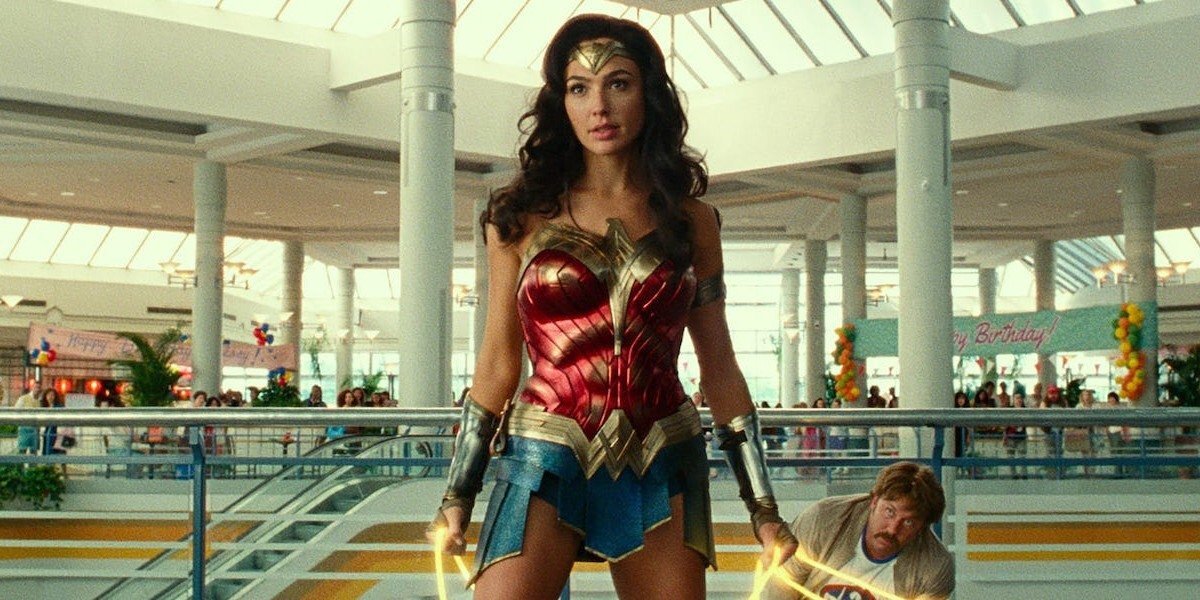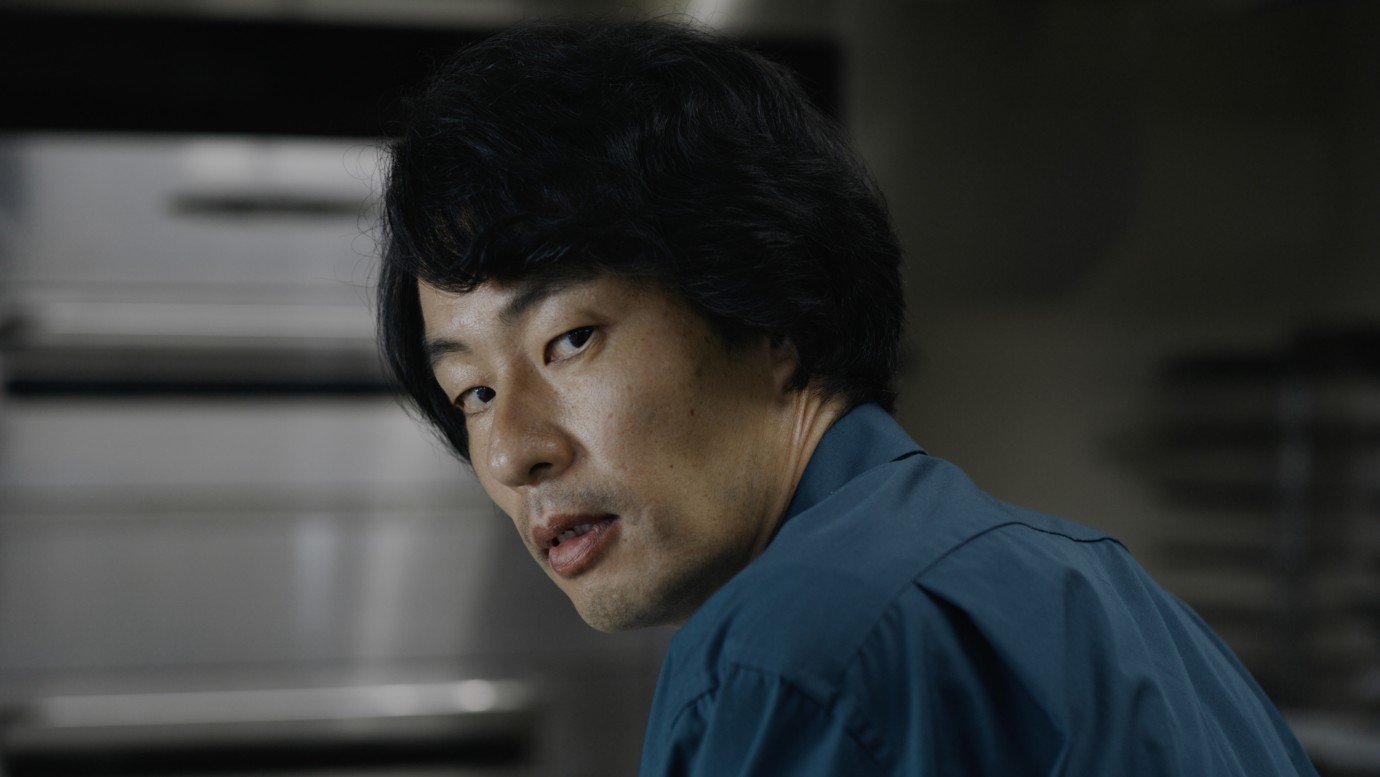Review: Wonder Woman 1984 (2020)
Patty Jenkins’ Wonder Woman 1984 is a disappointing mess. There’s no other way to describe it. Billed as a brightly-coloured, triumphantly-positive sequel to the 2017 smash hit, the film not only doesn’t take advantage of its 1980s setting, but it fails to meet even the lowest benchmarks of competent blockbuster filmmaking. Poorly structured, haphazardly shot, tonally inconsistent, and with bland action scenes (that are few and far between), the film never manages to get going, let alone satisfy the bizarre vision of its ambition.
After a prologue set during Diana’s childhood on the island of Themyscira, the film picks up in the year of its title when Diana (Gal Gadot) is working as a historian at the Smithsonian. The plot kicks off when she meets a new colleague, Barbara Minerva (Kristen Wiig), an awkward gemologist who discovered a magical stone, “The Wishing Stone,” among her current objects of study. Diana doesn’t think much of the stone until people start touching it and their wishes come true at a terrible cost. For instance, Barbara wishes for Diana’s powers while touching the stone and magically finds herself strong and confident in the aftermath. The oil charlatan Maxwell Lord (Pedro Pascal) is after the stone and eventually steals it and fuses with it, imbuing himself with the power to grant the wishes of anyone he touches, but with an unknown cost to himself and the wisher. He becomes the Monkey’s Paw, in essence, and starts to gather all the powers of the globe to himself through the power of wishes. Diana has to stop him, but she’s too distracted by the reappearance of her dead love, Steve Trevor (Chris Pine), who has magically returned through the power of the stone.
As this plot description shows, the narrative of Wonder Woman 1984 is silly, which is fairly standard for most superhero movies and not a problem per se. Unfortunately, it’s also incomprehensible. Events in the film simply happen, with no explanation or motivation. Characters appear and disappear. Obstacles are raised and overcome. Everything seems arbitrary, because no rules are established for the stone or the world of the film. It also seems to be indifferent about the character of Wonder Woman herself.
While Wonder Woman 1984 has been promoted as Patty Jenkins’ personal love letter to the character—she co-wrote it with DC Comics writer Geoff Johns and Dave Callaham and became the highest-paid female director ever to direct it—the film mostly ignores Diana. She doesn’t get a comprehensible arc and most of her scenes are spent trying and failing to recreate the fish-out-of-water dynamic of the first film between her and Steve Trevor, except with each of them reversing their role from the first film.
The meat of the narrative is devoted to Maxwell Lord and Barbara Minerva, who both get the emotional arcs denied Diana and Steve. Maxwell becomes drunk on power and greed, but loses sight of his relationship with his son. Barbara becomes superpowered and confident, but loses the kindness that defined her as a person. In essence, Maxwell and Barbara are the two sides of Jim Carrey’s The Riddler from Joel Schumacher’s Batman Forever. And like the villains in Schumacher’s or Tim Burton’s Batman films, they are the true main characters of the work. Thus, the emotional thrust of the story is centred on their histrionic, campy, entertaining performances instead of Gal Gadot’s muted one. This isn’t automatically a bad thing, but it proves to be here.
In my review of Birds of Prey, I mentioned that the DCEU has recently rehabilitated the films of Joel Schumacher and embraced their candy-coloured, campy aspects. Wonder Woman 1984 seems to extend the olive branch to the late Christopher Reeve sequels as well. It’s a film that embodies the campiest aspects of these early DC superhero films, which could be good, but it also shares their failure to cohere in terms of character, theme, and tone. If Wonder Woman 1984 had been a shameless remake of Batman Forever (a film I remain immensely fond of), I would’ve been onboard, but Wonder Woman 1984 still strives for profundity in its thematic focus on the cost of dreams and the pragmatic dimensions of what is possible in the world. But this makes no sense considering the film is about a woman who doesn’t age, can ride lightning with a lasso, and flies an invisible plane. It wants to inspire by telling the viewer to stop dreaming for the impossible— a truly bizarre and insulting message for a fantasy of justice and power.
But the simplest answer to why the film doesn’t work is its lack of exposition. Fantastical things happen in every scene throughout Wonder Woman 1984, but the film never spends time explaining how these things are possible within the framework of the story. Unfortunately, this skipping of exposition is not done in order to streamline the film and make it as brisk as possible. The filmmakers are happy to extend the film to a bloated 151 minutes and let filler scenes, such as a fashion show gag with Chris Pine and Gal Gadot, go on far beyond their logical limits. The film skips the exposition for no ostensible reason, making the film not only cliche, but baffling throughout. The key scene where Chris Pine’s Steve Trevor returns to the world of the living is the best example of the film’s confusing nature; it is not only filmed and performed in a strangely-subtle manner, but it’s also never explained. It simply makes no sense and the characters continue on as if it does, ignoring any of the strange and discomfiting elements of this plot point.
The film also lacks any of the inspiring action scenes or awesome moments of superpowers that we expect of the genre. There are a few rare moments where we feel the excitement of Diana’s powers, such as when she learns to fly and lassos lightning bolts to swing through the sky. But most of the action scenes are damp squibs, with incoherent blocking and framing and cheap visual effects. A chase scene on an Egyptian highway in the middle of the film is more reminiscent of the running scenes in Twilight than the truck chase from Raiders of the Lost Ark it is obviously attempting to pay homage to. It’s as if Patty Jenkins forgot how to shoot exciting action, which is baffling after the first film and the rousing success of its famous trench battle scene.
Wonder Woman 1984 embodies most of the bad and almost none of the good of big-budget superhero movies. It loses the richness of the character dynamics and thematic interests that were present in the first film without replacing them with the carnivalesque fun of the earlier DC superhero films it’s inspired by. It’s incoherent as a story and lacklustre as an action spectacle. It’s simply a bad film that drains the charisma of its usually charismatic performers and loses the action spectacle key to a superhero film’s success. What a disappointment.
3 out of 10
Wonder Woman 1984 (2020, USA)
Directed by Patty Jenkins; written by Patty Jenkins, Geoff Johns, and Dave Callaham, based on a story by Patty Jenkins and Geoff Johns, based on the character created by William Moulton Marston; starring Gal Gadot, Chris Pine, Kristen Wiig, Pedro Pascal, Robin Wright, Connie Nielsen.



Darren Aronofsky ultimately cannot manage the tone of this black comedy crime film.